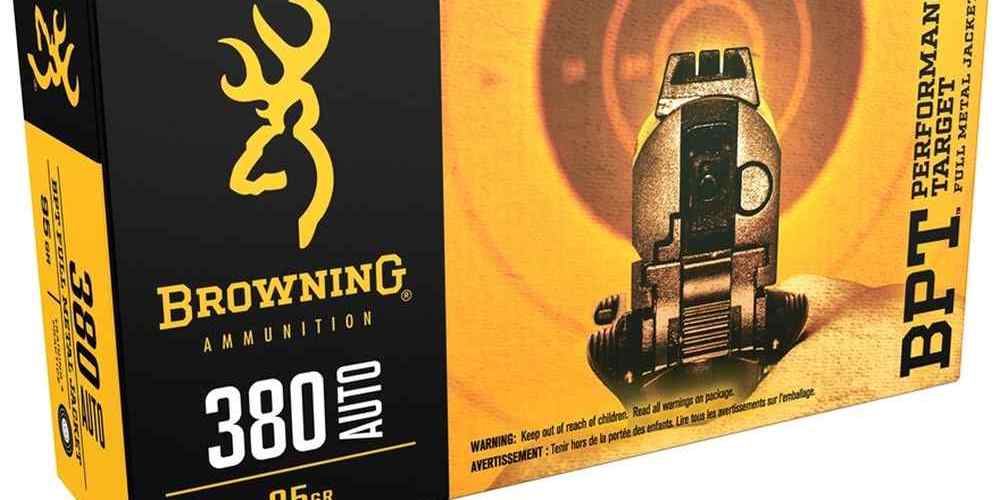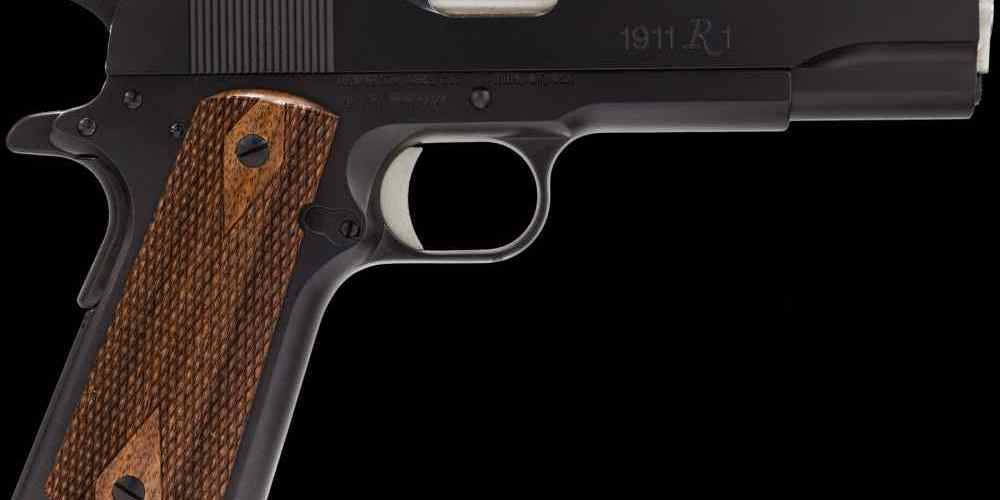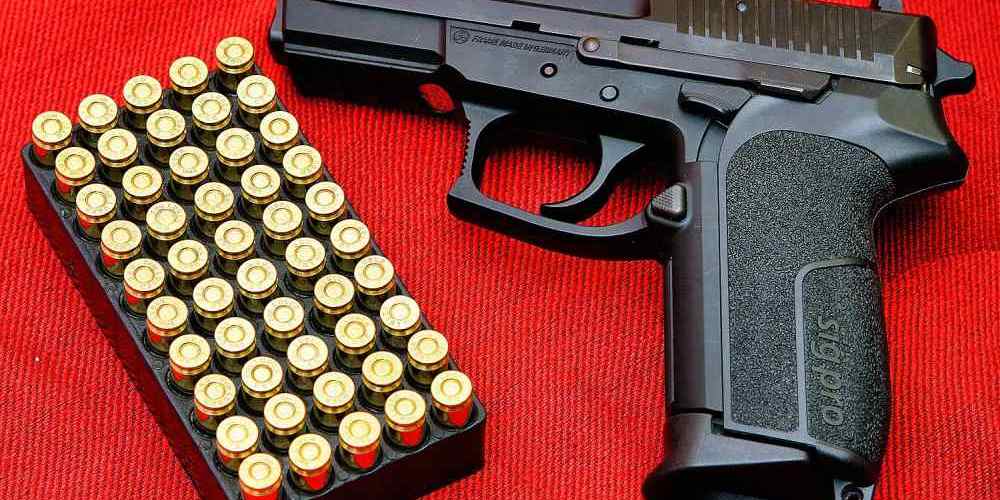“Revolutionizing firepower for civilian defense.”
Military Origins of Semi-Auto Ammo
Semi-automatic ammunition has a long and storied history, with its origins rooted in military applications. The concept of semi-automatic firearms dates back to the late 19th century, with the development of the first semi-automatic rifle by Ferdinand Mannlicher in 1885. This revolutionary design allowed for rapid firing of multiple rounds without the need to manually reload after each shot, making it a game-changer on the battlefield.
The military quickly recognized the advantages of semi-automatic firearms, and they were soon adopted by various armed forces around the world. Semi-automatic ammunition provided soldiers with increased firepower and improved accuracy, giving them a significant advantage over their adversaries. These weapons were particularly effective in close-quarters combat situations, where quick and precise shooting could mean the difference between life and death.
As technology advanced, so too did the design of semi-automatic ammunition. The introduction of new materials and manufacturing techniques allowed for lighter, more durable, and more reliable firearms. This evolution in design led to the development of iconic weapons such as the M1 Garand, the Browning Automatic Rifle, and the M16, all of which played crucial roles in shaping the course of modern warfare.
Transitioning from military applications to civilian use, semi-automatic ammunition has become increasingly popular among gun enthusiasts and sports shooters. The same features that made semi-automatic firearms so effective on the battlefield – rapid firing, increased accuracy, and ease of use – have made them attractive options for recreational shooting and self-defense.
One of the key advantages of semi-automatic ammunition is its versatility. Unlike traditional bolt-action rifles or revolvers, semi-automatic firearms can fire multiple rounds in quick succession, making them ideal for target shooting, hunting, and competitive shooting sports. This rapid-fire capability allows shooters to engage multiple targets quickly and efficiently, making it a popular choice for those looking to improve their marksmanship skills.
In addition to its versatility, semi-automatic ammunition also offers a high level of customization. With a wide range of accessories and modifications available, shooters can tailor their firearms to suit their individual preferences and shooting style. From adjustable stocks and grips to specialized optics and muzzle devices, there are countless ways to personalize a semi-automatic firearm to meet specific needs and preferences.
Despite its popularity among civilians, semi-automatic ammunition has also faced criticism and controversy. Some argue that the rapid-fire capabilities of semi-automatic firearms make them more dangerous than traditional firearms, while others point to high-profile incidents of mass shootings involving semi-automatic weapons as evidence of their potential for misuse.
In response to these concerns, lawmakers have proposed various restrictions and regulations on semi-automatic ammunition, including bans on certain types of firearms and ammunition magazines. While these measures are intended to improve public safety and reduce the risk of gun violence, they have also sparked heated debates over the rights of gun owners and the effectiveness of such restrictions in preventing crime.

As the debate over semi-automatic ammunition continues, one thing is clear: its evolution from military origins to civilian use has forever changed the landscape of firearms technology. Whether used for recreation, self-defense, or sport, semi-automatic ammunition remains a powerful and versatile tool that continues to shape the way we think about firearms and their role in society.
Development of Semi-Auto Ammo for Civilian Use
Semi-automatic firearms have been a staple in military arsenals for decades, offering soldiers the ability to fire multiple rounds quickly and efficiently. However, in recent years, semi-automatic firearms have become increasingly popular among civilians for recreational shooting and self-defense purposes. With this rise in civilian ownership of semi-automatic firearms, there has been a corresponding increase in the demand for ammunition that is specifically designed for use in these firearms.
The development of semi-automatic ammunition for civilian use has been a fascinating evolution, with manufacturers constantly striving to improve the performance and reliability of their products. One of the key differences between semi-automatic ammunition and traditional ammunition is the design of the cartridge. Semi-automatic cartridges are typically designed with a rimless case, which allows for smoother feeding and extraction in semi-automatic firearms.
Another important factor in the development of semi-automatic ammunition for civilian use is the type of bullet used. While traditional ammunition typically uses full metal jacket bullets, semi-automatic ammunition often features hollow point or soft point bullets. These types of bullets are designed to expand upon impact, creating a larger wound channel and increasing the likelihood of stopping an attacker.
In addition to the design of the cartridge and bullet, manufacturers of semi-automatic ammunition have also focused on improving the overall performance of their products. This includes developing ammunition that is more reliable and consistent, with fewer instances of misfires or jams. By using high-quality components and rigorous quality control measures, manufacturers are able to produce ammunition that meets the demanding needs of semi-automatic firearms.
One of the most significant advancements in semi-automatic ammunition for civilian use has been the development of specialty rounds, such as frangible ammunition. Frangible ammunition is designed to break apart upon impact, reducing the risk of overpenetration and minimizing the risk of collateral damage. This type of ammunition is particularly popular for use in home defense situations, where the risk of hitting unintended targets is a major concern.
Another important development in semi-automatic ammunition for civilian use is the use of lead-free projectiles. Lead-free ammunition is becoming increasingly popular due to concerns about the environmental impact of lead contamination. By using alternative materials such as copper or steel, manufacturers are able to produce ammunition that is just as effective as traditional lead-based ammunition, without the potential environmental hazards.
Overall, the evolution of semi-automatic ammunition for civilian use has been driven by a combination of technological advancements, consumer demand, and regulatory requirements. Manufacturers continue to push the boundaries of what is possible, developing new and innovative products that meet the needs of today’s shooters. Whether for recreational shooting, self-defense, or hunting, semi-automatic ammunition has come a long way from its military origins and continues to evolve to meet the needs of a growing market.
Impact of Semi-Auto Ammo on Shooting Sports
Semi-automatic ammunition has come a long way since its military origins, evolving to become a popular choice for civilian use in shooting sports. The impact of semi-auto ammo on shooting sports cannot be understated, as it has revolutionized the way people approach target shooting and competition.
One of the key advantages of semi-auto ammo in shooting sports is its rapid-fire capability. Unlike traditional bolt-action rifles, semi-automatic firearms allow shooters to fire multiple rounds in quick succession without the need to manually cycle the action. This increased rate of fire can be a game-changer in competitive shooting events, where speed and accuracy are paramount.
In addition to its rapid-fire capability, semi-auto ammo also offers shooters greater convenience and ease of use. With a semi-automatic firearm, shooters do not have to manually chamber a round after each shot, making it easier to stay on target and maintain a consistent shooting rhythm. This can be especially beneficial in fast-paced shooting competitions where split-second decisions can make all the difference.
Furthermore, semi-auto ammo is known for its reliability and consistency. Modern semi-automatic firearms are designed to function flawlessly with a wide range of ammunition types, ensuring that shooters can rely on their equipment to perform consistently in any shooting scenario. This reliability is crucial in shooting sports, where a single malfunction can mean the difference between victory and defeat.
Another key advantage of semi-auto ammo in shooting sports is its versatility. Semi-automatic firearms are available in a wide range of calibers and configurations, allowing shooters to tailor their equipment to suit their individual preferences and shooting style. Whether you prefer a compact pistol for close-quarters combat or a long-range rifle for precision shooting, there is a semi-automatic firearm to meet your needs.
Despite its many advantages, semi-auto ammo has also faced criticism and controversy in the shooting sports community. Some argue that the rapid-fire capability of semi-automatic firearms makes them more dangerous than traditional bolt-action rifles, leading to calls for stricter regulations and restrictions on their use. However, proponents of semi-auto ammo argue that responsible gun ownership and proper training are the key to ensuring safe and responsible use of these firearms.
In conclusion, the impact of semi-auto ammo on shooting sports has been profound, revolutionizing the way people approach target shooting and competition. With its rapid-fire capability, convenience, reliability, and versatility, semi-automatic firearms have become a popular choice for shooters of all skill levels. While controversy and debate continue to surround the use of semi-auto ammo in shooting sports, one thing is clear: these firearms are here to stay, shaping the future of competitive shooting for years to come.
Legal and Regulatory Issues Surrounding Semi-Auto Ammo
Semi-automatic firearms have been a topic of controversy for many years, with debates raging over their use in both military and civilian settings. One aspect of this debate that often gets overlooked is the ammunition used in these firearms. The evolution of semi-auto ammo from its military origins to its widespread civilian use has raised a number of legal and regulatory issues that must be addressed.
One of the primary concerns surrounding semi-auto ammo is its lethality. The high rate of fire and large magazine capacity of semi-automatic firearms make them capable of inflicting a great deal of damage in a short amount of time. This has led to calls for restrictions on the sale and use of semi-auto ammo, particularly in high-capacity magazines.
In response to these concerns, some states have enacted laws limiting the sale of semi-auto ammo or banning certain types of ammunition altogether. For example, California has banned the sale of armor-piercing ammunition for semi-automatic firearms, while New York has restricted the sale of high-capacity magazines.
These restrictions have sparked a debate over the balance between public safety and individual rights. Proponents of stricter regulations argue that limiting access to semi-auto ammo will help prevent mass shootings and other acts of violence. Opponents, on the other hand, argue that such restrictions infringe on the Second Amendment right to bear arms.
Another legal issue surrounding semi-auto ammo is the question of liability. In recent years, there have been a number of high-profile lawsuits filed against manufacturers of semi-automatic firearms and ammunition, alleging that they are responsible for the harm caused by their products. These lawsuits have raised questions about the extent to which manufacturers can be held accountable for the actions of individuals who use their products.
In response to these lawsuits, some states have passed laws granting immunity to manufacturers of firearms and ammunition. These laws, known as “gun immunity” laws, shield manufacturers from liability for the misuse of their products by third parties. However, critics argue that these laws provide too much protection to manufacturers and limit the ability of victims to seek justice.
The legal and regulatory landscape surrounding semi-auto ammo is complex and constantly evolving. As technology advances and new types of ammunition are developed, lawmakers and regulators must stay ahead of the curve to ensure that public safety is protected. At the same time, they must balance the rights of gun owners and manufacturers to ensure that any restrictions are fair and reasonable.
In conclusion, the legal and regulatory issues surrounding semi-auto ammo are a critical aspect of the broader debate over firearms in society. As technology continues to advance and new threats emerge, it is essential that lawmakers and regulators work together to find solutions that protect public safety while respecting individual rights. Only through thoughtful and balanced regulation can we hope to address the challenges posed by semi-automatic firearms and their ammunition.
Future Trends in Semi-Auto Ammo Technology
Semi-automatic firearms have been a staple in military and law enforcement arsenals for decades, offering rapid-fire capabilities and increased firepower compared to traditional firearms. One key component that enables semi-automatic firearms to function is the ammunition they use. Over the years, there have been significant advancements in semi-auto ammo technology, evolving from its military origins to widespread civilian use.
The evolution of semi-auto ammo can be traced back to the early 20th century when the first semi-automatic firearms were developed for military use. These firearms required specialized ammunition that could reliably cycle through the weapon’s action, allowing for rapid and efficient firing. As semi-automatic firearms became more prevalent in military applications, the need for specialized ammunition grew, leading to the development of cartridges specifically designed for semi-auto firearms.
One of the key advancements in semi-auto ammo technology was the development of rimless cartridges, which allowed for smoother feeding and extraction in semi-automatic firearms. Rimless cartridges lack the rim found on traditional cartridges, making them more reliable in semi-auto firearms where the cartridge must be fed from a magazine into the chamber quickly and efficiently. This innovation revolutionized semi-auto ammo technology, paving the way for the widespread adoption of semi-automatic firearms in military and civilian applications.
Another significant advancement in semi-auto ammo technology was the development of bottlenecked cartridges, which feature a tapered neck that allows for increased velocity and improved ballistic performance. Bottlenecked cartridges are commonly used in semi-automatic rifles and pistols, offering superior accuracy and range compared to straight-walled cartridges. This innovation has made semi-automatic firearms more versatile and effective in a variety of shooting scenarios, from long-range precision shooting to close-quarters combat.
In recent years, there has been a growing trend towards the use of polymer-cased ammunition in semi-automatic firearms. Polymer-cased ammunition offers several advantages over traditional brass-cased ammunition, including reduced weight, increased corrosion resistance, and improved reliability. Polymer-cased ammunition is also more cost-effective to produce, making it an attractive option for both military and civilian shooters.
The future of semi-auto ammo technology is bright, with continued advancements in materials, design, and manufacturing processes driving innovation in the industry. One area of focus is the development of caseless ammunition, which eliminates the need for a traditional cartridge case by encapsulating the propellant and projectile in a solid block. Caseless ammunition offers several advantages, including reduced weight, increased capacity, and improved reliability. While caseless ammunition is still in the early stages of development, it holds great promise for the future of semi-auto ammo technology.
Overall, the evolution of semi-auto ammo technology has been driven by the need for reliable, efficient, and effective ammunition for semi-automatic firearms. From the development of rimless and bottlenecked cartridges to the adoption of polymer-cased and potentially caseless ammunition, the future of semi-auto ammo technology is bright. As advancements continue to push the boundaries of what is possible, shooters can expect to see even more innovative and high-performance ammunition options for their semi-automatic firearms.






